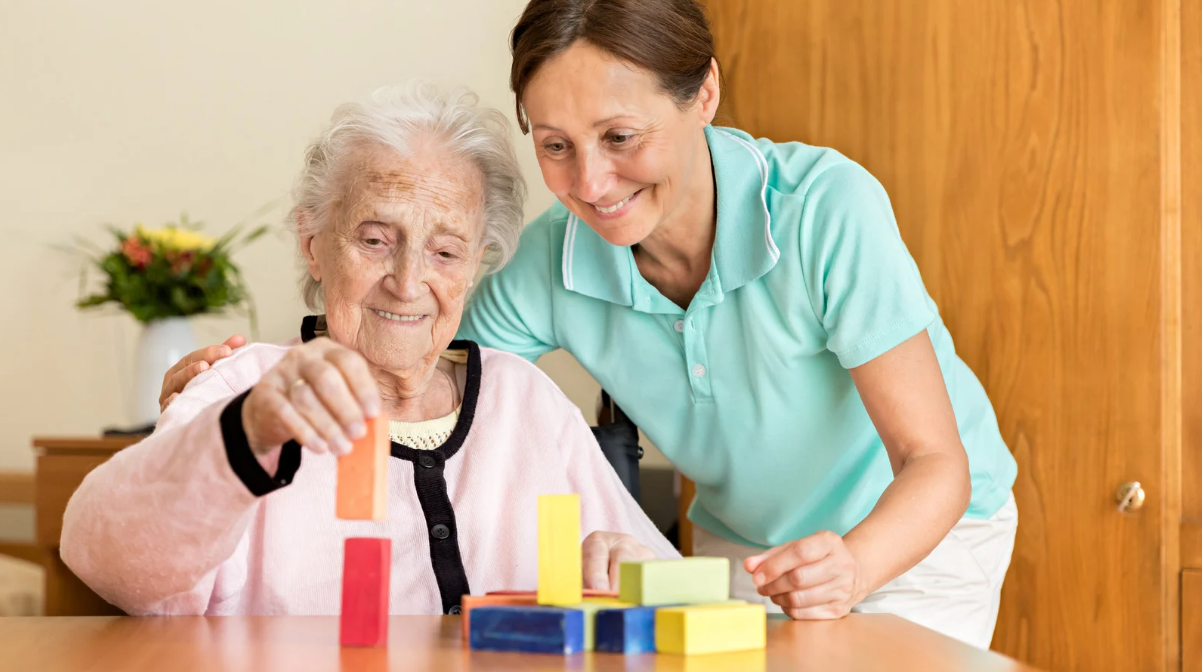Aging doesn’t mean giving up on independence—it means adapting to new challenges with the right support. For many elderly people, daily tasks that once felt simple—like getting dressed, cooking meals, or even moving safely around the home—can become difficult due to physical limitations, chronic illness, or cognitive decline. That’s where occupational therapy (OT) comes in.
Occupational therapy is a vital part of senior care because it focuses on helping older adults live life to the fullest, no matter their age or ability. By combining practical strategies, adaptive tools, and personalized care, OT empowers seniors to maintain independence, stay safe at home, and continue enjoying meaningful activities.
In this guide, we’ll explore everything you need to know about occupational therapy for elderly people: what it is, why it matters, the benefits, what to expect during sessions, and how it supports seniors with specific conditions. If you’re wondering whether OT might help your loved one—or even yourself—this comprehensive article will answer your questions.
What Is Occupational Therapy for Elderly People?
Occupational therapy is often confused with physical therapy, but while they share similarities, they are not the same. Physical therapy (PT) focuses on restoring physical movement and strength, whereas occupational therapy (OT) emphasizes helping people perform daily activities—also known as “occupations”—with greater independence and safety.
For elderly people, OT isn’t about learning a job; it’s about reclaiming control over daily life. That could mean:
- Learning safer ways to get dressed without losing balance.
- Using adaptive equipment to make cooking easier.
- Developing memory strategies to manage dementia.
- Adjusting the home environment to reduce fall risks.
The ultimate goal of OT is simple: to help seniors remain as independent, safe, and engaged as possible.
Why Do Elderly People Need Occupational Therapy?

Aging often brings new health challenges that impact daily living. Seniors may struggle with:
- Physical limitations from arthritis, stroke, or Parkinson’s disease.
- Balance issues that increase the risk of falls.
- Cognitive decline due to dementia or memory loss.
- Chronic illnesses such as diabetes, COPD, or heart disease that cause fatigue.
- Emotional challenges like depression, anxiety, or isolation.
Without proper support, these struggles can lead to loss of independence and reduced quality of life. Occupational therapy steps in to bridge that gap by teaching practical strategies, strengthening skills, and creating safer environments tailored to each person’s unique needs.
Key Benefits of Occupational Therapy for Seniors
Occupational therapy provides a wide range of benefits that go beyond physical support, touching nearly every aspect of an older adult’s life.
- Improved Independence: Seniors can continue handling tasks like dressing, bathing, and eating with confidence, which allows them to feel capable and reduces their reliance on others.
- Fall Prevention: OTs recommend balance training and safety modifications to reduce fall risks, helping seniors stay mobile while avoiding injuries that often lead to hospitalizations.
- Cognitive Support: For seniors with memory challenges, OT provides tools like daily routines, visual cues, and memory exercises, which can slow cognitive decline and maintain mental sharpness.
- Emotional Well-Being: Engaging in hobbies, social activities, and meaningful routines improves mental health, giving seniors a renewed sense of joy and purpose in their daily lives.
- Support for Caregivers: OT equips family members with knowledge and strategies to care for their loved ones more effectively, easing caregiver stress and promoting healthier relationships at home.
In short, OT doesn’t just treat conditions—it helps seniors maintain dignity, purpose, and independence throughout the aging process.
Common Occupational Therapy Interventions for the Elderly

Occupational therapists use a variety of strategies depending on a senior’s needs:
- Activities of Daily Living (ADLs): Training in dressing, eating, grooming, bathing, and toileting helps seniors manage essential self-care tasks with greater ease and independence.
- Instrumental Activities of Daily Living (IADLs): Support with tasks like cooking, shopping, housekeeping, and managing medications enables seniors to stay engaged in everyday responsibilities that keep their lives organized.
- Cognitive Training: Exercises for memory, problem-solving, and attention assist seniors with dementia or mild cognitive impairment in maintaining mental function and slowing decline.
- Mobility and Balance Training: Teaching safe ways to move, stand, and transfer reduces fall risks and helps seniors feel more secure as they go about their day.
- Adaptive Equipment Use: Training in using tools like grab bars, walkers, reachers, and kitchen aids ensures seniors know how to maximize safety and independence with supportive devices.
- Energy Conservation: Teaching pacing strategies for seniors with chronic conditions who tire easily allows them to complete daily tasks without feeling exhausted or overwhelmed.
These interventions not only improve function but also provide seniors with confidence to live life on their terms.
Occupational Therapy at Home: What to Expect
Home-based OT is one of the most effective approaches for seniors, because it tailors support to the environment where they spend most of their time. Here’s what families can expect:
- Initial Assessment: The therapist evaluates the senior’s health, daily routines, and home environment.
- Personalized Care Plan: Goals are set—whether that’s improving mobility, mastering adaptive equipment, or regaining independence after a stroke.
- Practical Training: Seniors practice tasks like cooking, bathing, or moving safely around the home with guidance.
- Family Involvement: Caregivers learn how to assist while promoting independence.
- Ongoing Support: Therapy evolves as the senior’s needs change.
This approach ensures therapy is meaningful, relevant, and directly applicable to daily life.
How Occupational Therapy Improves Safety at Home

Safety is one of the top concerns for families caring for elderly loved ones. Occupational therapists conduct home safety evaluations to identify risks and recommend modifications, such as:
- Removing tripping hazards like loose rugs or clutter.
- Improving lighting in hallways and bathrooms.
- Installing grab bars, non-slip mats, and shower chairs.
- Recommending raised toilet seats or bed rails for easier transfers.
Beyond home changes, OTs teach seniors safer techniques for moving around—helping them avoid injuries while maintaining independence.
Occupational Therapy for Seniors with Specific Conditions
OT is highly adaptable, making it effective for a wide range of health conditions:
- Stroke Recovery: Helps seniors regain the ability to eat, dress, or write.
- Dementia/Alzheimer’s: Provides memory aids, structured routines, and calming activities.
- Arthritis: Teaches joint-protection techniques and introduces tools to reduce strain.
- Parkinson’s Disease: Improves fine motor skills and strategies to cope with tremors.
- Chronic Illness: Offers energy-saving techniques to reduce fatigue and improve quality of life.
Each therapy plan is customized, ensuring seniors receive support tailored to their unique challenges.
Occupational Therapy vs. Other Senior Care Services
Families often wonder: How is occupational therapy different from other services?
- Physical Therapy: Focuses on restoring movement, strength, and balance.
- Nursing Care: Provides medical treatment such as medication management or wound care.
- Home Health Aides: Assist with daily living tasks but don’t provide therapy.
Occupational therapy fills a unique role by teaching seniors how to safely and effectively do things for themselves—bridging the gap between medical care and daily independence.
Frequently Asked Questions About Occupational Therapy for Elderly People

1. How do I know if my elderly parent needs OT?
If they’re struggling with daily tasks (dressing, cooking, mobility) or experiencing frequent falls, OT can help.
2. Does insurance cover occupational therapy?
Many insurance plans, including Medicare, cover OT when prescribed by a doctor. Always check specific policy details.
3. How long does OT usually last?
It depends on goals and progress. Some seniors need a few months; others benefit from ongoing support.
4. Can OT help with dementia?
Yes. OT provides memory strategies, routines, and safe activities to improve quality of life.
5. What’s the difference between OT in a clinic vs. home health care?
Clinic OT focuses on controlled therapy settings, while home-based OT adapts strategies to the senior’s actual living environment.
Why Choose Home-Based Occupational Therapy for Seniors?
Home-based OT has unique advantages:
- Seniors feel more comfortable in their own homes.
- Therapists address real-life challenges in the environment where they happen.
- Family members can be directly involved in therapy.
- No stress of traveling to clinics.
- Practical solutions are implemented immediately.
This personalized approach often leads to faster progress and longer-lasting results.
Why You Can Trust Our Home Health Care Services

At Genezen Home Health Care, we believe every senior deserves to age with dignity, safety, and independence. Our occupational therapists are trained professionals who specialize in working with older adults, whether they’re recovering from illness, adjusting to chronic conditions, or simply seeking more independence.
We provide:
- Comprehensive assessments tailored to each client.
- Customized therapy plans that respect personal goals.
- Home safety evaluations to reduce risks.
- Compassionate support for both seniors and caregivers.
With our dedicated team, you can trust that your loved one is not just cared for—but empowered to thrive.
Bringing It All Together
Occupational therapy is more than a medical service—it’s a pathway to independence, confidence, and a better quality of life for elderly people. Whether your loved one is recovering from a stroke, managing arthritis, or struggling with memory loss, OT provides the tools and support needed to live with dignity.
If you’re considering occupational therapy for yourself or a family member, remember: it’s never too late to take steps toward greater independence. With the right care, seniors can continue to enjoy the comfort of home, engage in meaningful activities, and maintain safety without losing autonomy.


